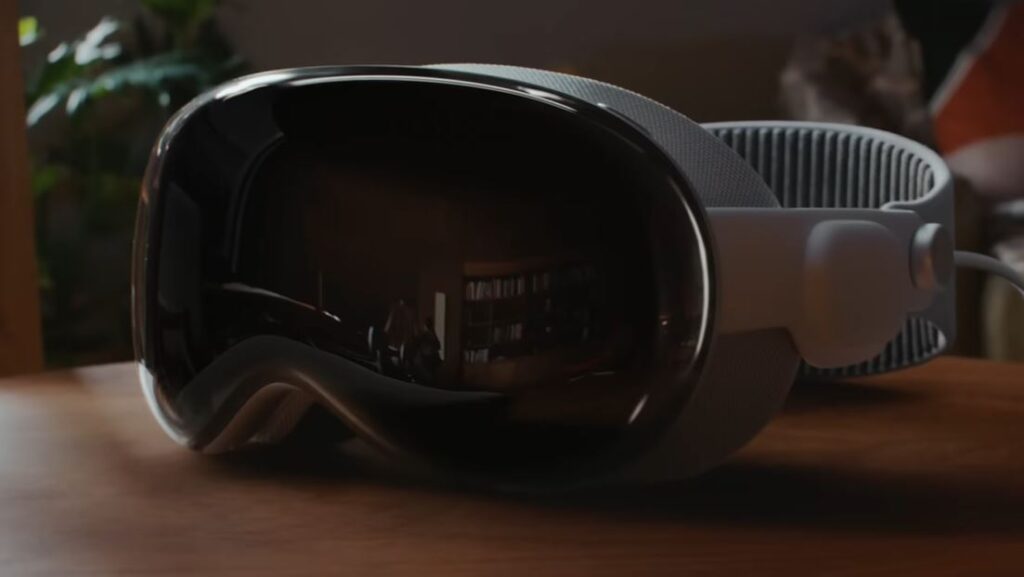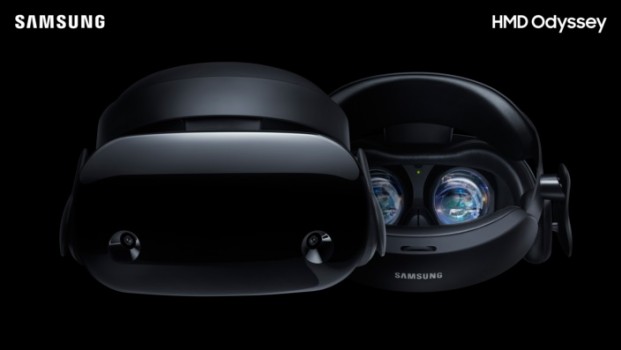Even though it is one of the world’s premier tech companies, Samsung is having trouble perfecting its Extended Reality (XR) gear. SBS Biz, a South Korean news organization, reports that Samsung has informed its partners of a three to six-month delay in the highly anticipated headset project. The XR headset’s original release date was early in 2024, but the current goal date is later owing to a redesign and upgraded specifications.
XR Headset Reviews: The Competitive Pressures of Two Brands

Photo from Apple, YouTube
According to rumors, Apple’s Vision Pro mixed reality (MR) headset was the cause of the delay. Astonishing the tech world with its dual near-4K microdisplays and a bespoke aluminum alloy frame supporting a curved glass front plate, Vision Pro was recently unveiled. According to reports, this development has caused Samsung to reevaluate the technical specifications and design of its own XR headset, hence the delay.
The introduction of the first iPhone had a similar effect on the tech industry, prompting Google to rethink and “start over” with Android. Apple’s relentless pursuit of technological innovation has continually pushed its rivals to improve their products or risk falling behind.
Samsung’s History in VR: Gear VR and Odyssey
While information about the revamped Samsung XR headset is still under wraps, the corporation has a track record of putting resources into VR. The Gear VR, created by Samsung and Facebook in 2014, was one of the first virtual reality products aimed at the mainstream market. Gear VR was a popular virtual reality (VR) platform, although it was eventually eclipsed by devices that didn’t require docking a phone, such as Oculus Go and Oculus Quest.
Samsung released the Odyssey, a virtual reality headset for Windows PCs, at the end of 2017 and the Odyssey+ in 2018, respectively, to break into the competitive virtual reality (VR) market. Similar to the Oculus Quest and HTC Vive Pro, these headgear used OLED displays but were not commercially successful. In 2020, Samsung was granted a patent for a follow-up device, but nothing came of it.
Apple Vision Pro Challenges and Production Issues
Instead, Apple Vision Pro claims to be a major improvement for augmented and virtual reality. Apple has made production concessions, which is disappointing given that the product presents a fascinating vision for the future of MR. This may have prompted companies like Samsung and Google to rethink XR with a renewed emphasis on portable headsets.
Samsung’s Delayed XR Headset and Redesign Decision
It is expected that Android and a Qualcomm CPU will power Samsung’s revamped XR headset. In a previous announcement, the business stated that it would be collaborating with Google and Qualcomm to develop an “unannounced version of Android” optimized for “wearable displays.” The fact that Google is collaborating with OEMs on XR hardware rather than creating its own XR gear is notable.
Although the delay indicates that Samsung is aiming for the luxury XR headset market rather than immediately competing with Meta’s planned Quest 3 mixed reality headset, the XR headset still promises to be an attractive competitor to Apple Vision Pro. Quest 3, which will be released by Meta (previously Facebook) in the fall of 2023, will be priced at $500, making it more affordable for users.
The decision to hold off on releasing Samsung’s XR headset could be considered a strategic move to ensure that the company delivers a state-of-the-art device capable of competing well with Apple’s Vision Pro. Consumers should anticipate exciting new developments in the XR headset industry in the next months and years as tech titans continue to compete for dominance in the mixed reality area.
How to Choose a Mixed Reality Headset Like A Pro
While we wait patiently for Apple and Samsung to release their latest magnum opus’, here are some tips you should consider before making an XR headset purchase:
- You should give some thought to your intended application before settling on a mixed-reality headset. Do you want to spend most of your time playing games, working, or having fun? When shopping for a headset, it’s important to take into account the precise task you intend to use it for.
- Make Sure It Works with What You Already HaveMake sure the mixed reality headset you’re interested in works with what you already have. Verify compatibility to avoid being let down by a headset that doesn’t work with your computer or phone.
- Fit and comfort: A mixed reality headset needs to be comfortable to use for long periods. Try to find models that have straps you can adjust, padded straps, and a low weight. If you can, putting on the headset will help you gauge how well it fits.
- A compelling mixed reality experience relies heavily on the display’s quality, particularly its resolution and refresh rate. More immersive images can be achieved with higher resolutions and higher refresh rates. To maximize your fun, think about getting headsets with high-resolution screens.
- For a stress-free experience in the virtual world, it’s important that the headset you pick has responsive and precise tracking for the controllers. The quality of the controllers also makes a big difference in how you can interact with the virtual world, so make sure to test them out.
- Think about the ecosystem of content and apps that support the headset of your choice. Enjoy a wide variety of content types and useful tools thanks to a well-developed ecosystem.
- If you want to use a headset without a computer, the battery life is quite important. If you want to get the most out of your gaming or working time, look for devices with long battery lives.
Frequently Asked Questions

When will Samsung unveil its revamped virtual reality headset?
Samsung has delayed the debut of its XR headset by three to six months so that it can revamp and improve its features. The new date for manufacturing is not early 2024 as was originally planned.
When compared to Samsung’s XR headset, how does Apple’s Vision Pro fare?
At this time, we don’t know anything about the reworked Samsung XR headset. Vision Pro, on the other hand, features two near-4K microdisplays and a curved glass front plate supported by a bespoke aluminum alloy frame.
When comparing VR with MR, what are the most significant distinctions?
While virtual reality (VR) transports people into an artificial world, augmented reality (AR) combines parts of the real and virtual worlds. With MR, people can utilize their real-world vision to interact with digital content.
Can the XR headset be used with my current tech?
The headset’s compatibility is a determining factor. There are both PC-dependent and smartphone-independent mixed-reality headsets on the market. Before purchasing a headset, it is important to verify that it is compatible with your computer and other devices.
Can you name any other firms working on VR goggles?
Yes, several other tech giants than Samsung and Apple are investigating the potential of the XR headset market. Soon, the Quest 3 mixed reality headset from Meta (previously Facebook) will be released, and rumors have it that Google is developing a model for XR devices, with a concentration on OEM hardware.
How expensive are mixed reality headsets?
The price of a mixed reality headset can range widely depending on its capabilities and features. While high-end tethered headsets can cost more than $1,000, stand-alone headsets typically cost less, between $300 and $1,000.
How can I make sure that using an XR headset is not only possible but also pleasant?
Headsets with an adjustable strap, thick padding, and a light build are your best bets for wearing comfort. Taking breaks at strategic intervals throughout prolonged use is also recommended.
How much content is there for XR headsets, specifically?
Virtual reality (XR) headsets provide access to a wide variety of media, from games and movies to educational opportunities and time-saving apps. The wide range of available apps and content on today’s platforms means that there’s something for everyone.
XR Headset Reviews: Embracing Future of Mixed Reality
Finally, the tremendous competition and ongoing desire for innovation within the mixed reality market are demonstrated by Samsung’s delay and redesign of its planned XR headset in reaction to Apple’s Vision Pro. As tech giants compete for dominance, consumers can look forward to more innovative and immersive products. The delay may be a purposeful move on Samsung’s part to guarantee that their XR headset can effectively compete in the high-end market against Apple, while details about the design and specifications remain unknown.
Both firms are working to advance the state of the art in mixed reality, which bodes well for customers who will soon have access to a wide variety of fascinating XR experiences and applications. The industry’s dedication to developing cutting-edge technology that will influence the way we interact with the virtual world is demonstrated by the delay in the delivery of Samsung’s headgear, which is indicative of the brisk pace of development in the realm of mixed reality.





